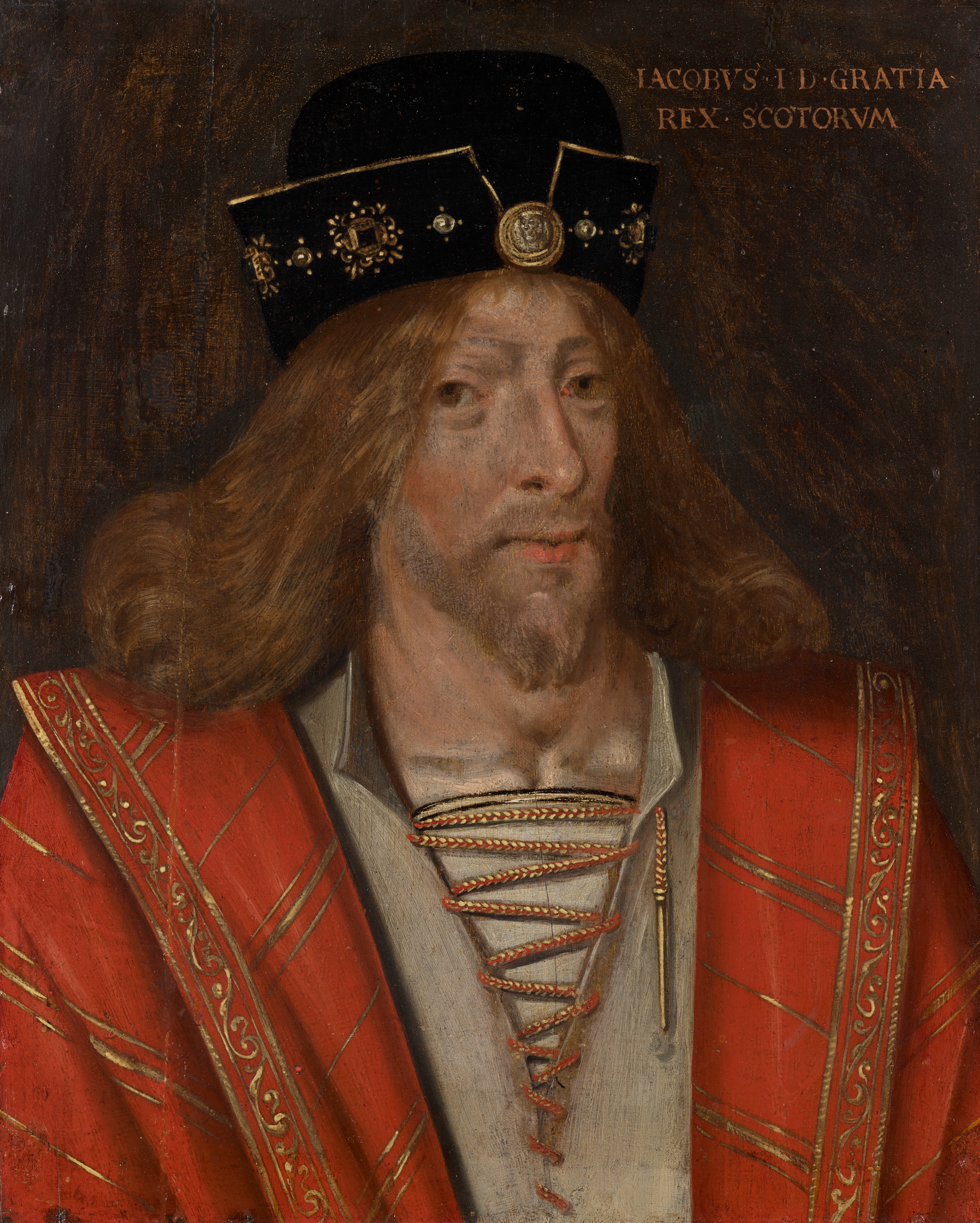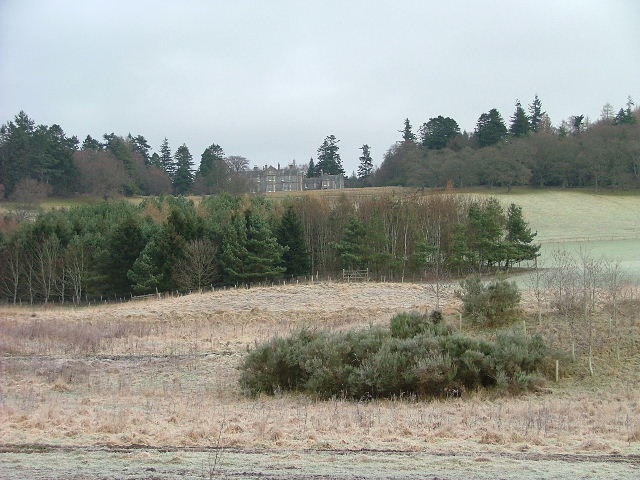Exploring the Stewart of Atholl: A Branch of Clan Stewart
by Aimee Li on Aug 22, 2024
Table of Content
I. Introduction
The Stewart of Atholl, a distinguished branch of the more prominent Clan Stewart, is significant in Scottish history. This noble lineage has woven its story into the fabric of Scotland's past, leaving an indelible mark on the nation's culture, politics, and heritage. From their origins in the heart of Perthshire to their influence on Scottish affairs, the Stewart of Atholl has played a pivotal role in shaping Scottish history.
This article delves into the rich tapestry of Stewart of Atholl, uncovering the origins, traditions, and notable figures that have defined this illustrious family through the centuries.
A. A Brief Overview of Stewart of Atholl
The Stewart of Atholl is a significant faction within the broader Clan Stewart, one of Scotland's most notable and powerful clans. The Stewart of Atholl are considered a family rather than a clan and have owned land in Highland Perthshire since the 1400s. They acquired the earldom of Atholl in 1457, and in 1627, the title was transferred to Murray of Tullibardine through marriage to the final heir of the Stewart line.

As a distinct branch, the Stewart of Atholl has maintained its traditions, heraldry, and clan structures while remaining connected to the broader Stewart Clan. This duality has allowed them to cultivate a rich and complex history, intertwining with some of the most significant events in Scottish history. Throughout the centuries, Stewart of Atholl has faced challenges, embraced opportunities, and left an indelible mark on Scottish society. The Stewart of Atholl's contributions to architecture, land management, and local governance have shaped their ancestral territories' very landscape and communities.
B. The original of Stewart of Atholl
The Stewart of Atholl trace their lineage to a son of Alexander Stewart, the Earl of Buchan, known as the "Wolf of Badenoch." At the end of the 14th century, James Stewart constructed a formidable castle at Garth, where he established his home. Queen Joanna, the widow of James I of Scotland, wed the Black Knight of Lorne, a descendant of the fourth High Steward. Their descendant, John Stewart of Balveny, was granted the Earldom of Atholl by his half-brother, James II of Scotland. He backed his brother by leading the royal troops against the Lord of the Isles' uprising. The fifth Earl of Atholl passed away without male heirs; his daughter married William Murray, the second Earl of Tullibardine, who became the new Earl of Atholl. Numerous Stewarts remained in the Atholl region, with many asserting their descent from the Wolf of Badenoch.

Most were loyal to the Murray Earls of Atholl and became known as Athollmen. This tradition continues today with the Atholl Highlanders, Europe's only legal private army. General David Stewart of Garth, an Athollman, served as an officer in the Black Watch regiment, and his book, Sketches of the Highlanders and Highland Regiments, helped popularize his homeland in Victorian England. James Stewart of Sticks and Ballechin (who died in 1523), the illegitimate son of James II, King of Scotland, is the forefather of various other Stewart families in Atholl, including those from Arnagang, Ballechin, Innervack, Killichassie, the later Kynachins, Loch of Clunie, and Stewartfield.
II. Stewart of Atholl History
The region of Atholl was a significant area for Stewart settlement. In 1822, General David Stewart of Garth noted: "James Stewart, son of Alexander Stewart, Earl of Buchan and Badenoch, often referred to as the Wolf of Badenoch, the second son of Robert II, is believed to have constructed the Castle of Garth and established residence there sometime after 1390. Currently, 1,937 individuals with the surname Stewart live in the Atholl district, tracing their lineage back to this man's male descendants..."

Following James I's assassination in 1437, his widow married the Black Knight of Lorne, who descended from the fourth High Steward before his family acquired the crown. The queen gave birth to Sir John Stewart of Balveny, who received the earldom of Atholl from his half-brother, James II; this title had previously been held by several royal Stewarts.
In the early 17th century, a heiress passed the earldom to the Murrays. After John, the fifth earl, died without male heirs, His daughter wed William Murray, the second Earl of Tullibardine, who was granted the title Earl of Atholl in 1627. By then, various other families had also settled in the area, including the Steuarts of Cardney, descendants of another illegitimate son of Robert II, and those of Ballechin, founded by a natural son of James II. The paramount chief's residence was Blair Castle, which remains intact with its treasures. The jurisdiction center at nearby Logierait was dissolved following the end of feudal jurisdictions after Culloden.

Numerous Stewart families continued to inhabit the Atholl lands and pledged loyalty to the new Murray Earls of Atholl, identifying themselves as Athollmen. This is recognized by the present Duke of Atholl's right to maintain the Atholl Highlanders, the only private army in the kingdom. In 1689, Murray summoned the Athollmen to support William of Orange, but his bailiff defiantly retained control of Blair Castle for James II. In 1715, Atholl supported the government again, although his heir, the Marquess of Tullibardine, was a Jacobite. Stewarts rallied behind Bonnie Prince Charlie in 1745.
It is widely acknowledged that the Earls of Galloway currently lead the main branch of this prominent name. It's also significant to mention that there is no official Stewart of Atholl badge; the one used is the Murray badge, which was adopted with Lord Lyon's consent. The Stewart of Atholl is directly descended from Alexander Stewart, Earl of Buchan, known as 'The Wolf of Badenoch,' who was infamous in the fourteenth century. He is primarily recognized for leading the raid that resulted in the burning of Elgin Cathedral in 1391. Subsequently, he built his stronghold, the Castle of Garth, and settled there. Alexander Stewart's descendants became known as Athollmen, pledging allegiance to the new Murray Earls of Atholl.

III. Stewart of Atholl Crest
The combination of these symbols in the Stewart of Atholl Crest not only honors the clan's historical roots but also conveys enduring values such as readiness, resilience, and a connection to the fertile landscapes of their ancestral lands. The crest is a proud emblem, representing the identity and spirit of Stewart of Atholl's history across generations.
Gaelic Name: Sty ward
Clan Motto: Furth Fortune and Fill the Fetters (Out, Forward, and Fill the Fetters)
Plant Badge: Oak
Clan Crest Badge: An arm proper holding a key

The Stewart of Atholl Crest is a striking representation of bravery and heritage. It features a healthy man figure who symbolizes the clan's resilience and strength. In his right hand, he wields a dagger, signifying courage and readiness for battle. In contrast, he holds a key in his left hand, representing authority and the ability to unlock new opportunities.
The crest is complemented by the clan's motto, "Furth Fortune and Fill the Fetters." this powerful phrase embodies the spirit of perseverance and determination, encouraging clan members to advance confidently through life's challenges.
IV. Stewart of Atholl Tartan
The Stewart of Atholl Tartan showcases various patterns and colors, reflecting the clan's storied heritage. Stewart of Atholl tartan is available in three primary types: Ancient, Muted, and Modern Tartan. Each variant is distinguished by its unique color palette, yet they all share a cohesive visual identity characterized by typical hues of rich reds and vibrant greens.


The Stewart of Atholl Ancient Tartan features softer, more subdued tones that evoke a sense of timelessness, while the Mudted Tartan offers a balanced blend of traditional and contemporary colors. The Stewart of Atholl Modern Tartan, on the other hand, incorporates bolder colors and sharper lines, appealing to modern sensibilities while still honoring the clan's legacy. Together, these tartan variations celebrate the Stewart of Atholl's heritage and provide a versatile choice for those wishing to showcase their connection to this historic clan.
Set sail on an odyssey through the illustrious annals of Stewart of Atholl with our handpicked collection of tartan creations. Embody the indomitable spirit that characterizes the Stewart of Atholl, weaving a piece of this noble history into the fabric of your daily existence:
V. Notable Stewart of Atholl places
A. Blair Castle

Blair Castle is currently the residence of the Murray Dukes of Atholl, who married the last heiress of the Stewart earldom. The castle has historically been crucial to maintaining control over Highland Perthshire during the conflicts of the Stuart kings over the throne. In 1644, it was captured by William Macpherson of Invereshie on behalf of Montrose. In 1689, Patrick Stewart of Ballechin occupied it for Viscount Dundee. The government held the castle in 1715, and in 1746, it became the site of the last siege in Britain.

During this siege, the Atholl Brigade, which included the Menzies and Robertson regiments and the Stewarts and tenants of the Duke of Atholl, invested in the castle and captured numerous government troops. The siege lasted from March 16 to April 2, 1746, when Prince Charles ordered the Brigade to move north. Two weeks later, the Battle of Culloden took place, resulting in casualties for approximately half the Stewarts and Robertsons of the Atholl Brigade.
B. Lude House

Lude House is the residence of the prominent cadet branch of Clan Donnachaidh. In 1745, Lady Lude hosted a ball in honor of Prince Charles Edward, who was staying at the nearby Blair Castle on his journey south to Perth. Enamored with the Prince, Lady Lude was noted for her spirited demeanor, which was likened to that of a "light giglet" in his presence.
C. The Clearances in Atholl
The Duke of Atholl was the first landowner in Highland Perthshire to clear land for sheep farming, with the clearances in Glen Tilt in Blair Atholl marking the first instance of this practice in Scotland. Around 1830, the Earl of Breadalbane followed suit, clearing lands in Glenquaich and parts of the Parish of Dull.
VI. Conclusion
The Stewart of Atholl embodies a rich tapestry of history, culture, and identity that resonates deeply with its members and supporters. From its storied past filled with notable figures to its distinctive crest and tartan, the clan represents a vital part of Scottish heritage. As its members navigate the modern world, they remain steadfast in preserving the traditions and values that define them. Ultimately, Stewart of Atholl's enduring legacy reminds us of the importance of heritage, community, and identity in an ever-changing world.
Frequently Asked Questions
What is the original of Stewart of Atholl?
The Stewart of Atholl trace their lineage to a son of Alexander Stewart, the Earl of Buchan, known as the "Wolf of Badenoch."
What is the Stewart of Atholl Motto?
Clan Motto: Furth Fortune and Fill the Fetters (Out, Forward, and Fill the Fetters)
What is the Stewart of Atholl crest?
The Stewart of Atholl Crest is a striking representation of bravery and heritage. It features a healthy man figure who symbolizes the clan's resilience and strength. In his right hand, he wields a dagger, signifying courage and readiness for battle. In contrast, he holds a key in his left hand, representing authority and the ability to unlock new opportunities.
How many Stewart clans are there?
Three clans
The Court of the Lord Lyon acknowledges two additional Stewart/Stuart clans: Clan Stuart of Bute and Clan Stewart of Appin. Clan Stuart of Bute is the only one among the three clans with an officially recognized chief.







